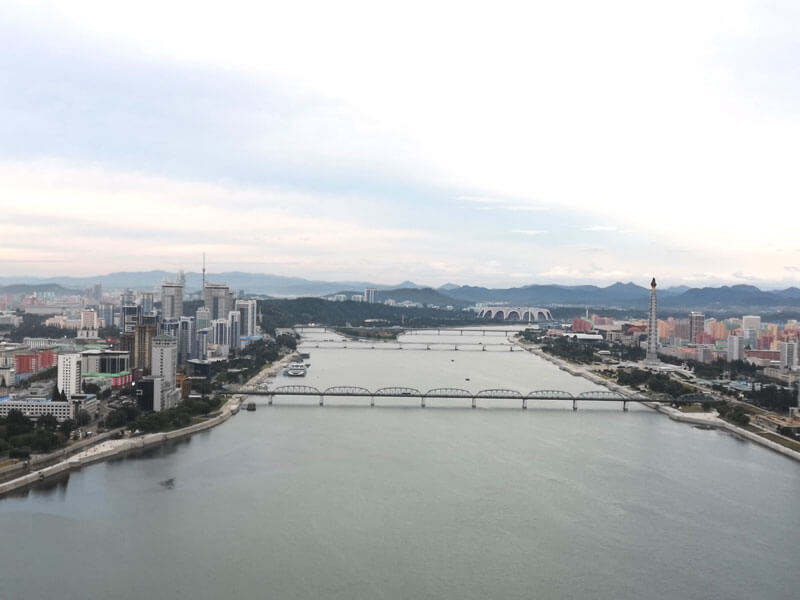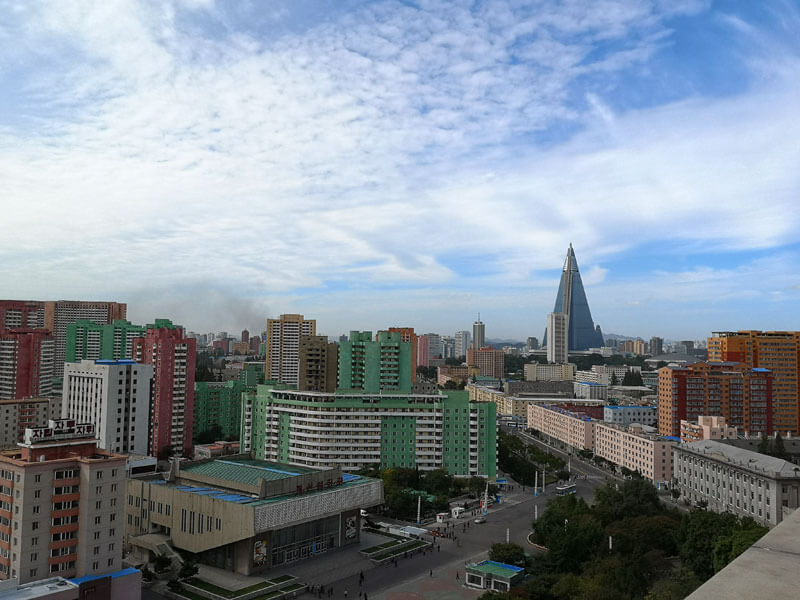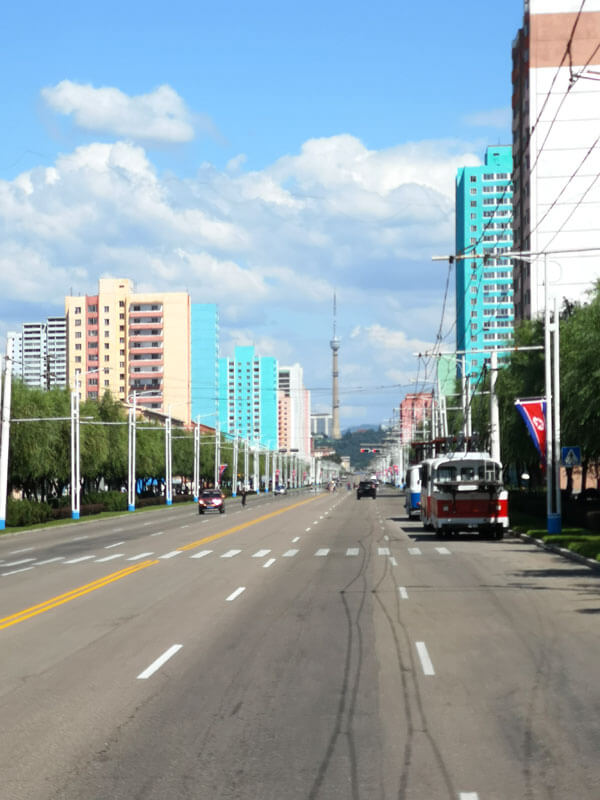What is the capital of North Korea? I’ll give you three guesses. Actually, you probably only need one, of course, it is the city of Pyongyang. As the national capital this makes Pyongyang extremely important. Political, cultural economic and all other important things are centered here. So, what is the Pyongyang story?
Table of Contents
What does Pyongyang mean?
Pyongyang literally means ‘flat land’, and in a very mountainous country like North Korea, we can probably take a guess how they chose the location. North Korea is literally full of mountains, so flat land makes a lot of sense for a capital city!
What fewer people know, is that Pyongyang has had many other historic names. It’s most famous, Ryugyong, which gave name to the famous unfinished pyramid-shaped hotel dominating the city’s skyline, means the capital of Willows. Other names include Changan, Hwangsong, Rakrang and Hogyong. There was a proposal to rename the city as Kim-Il Sung city when the President passed away, but this proposition was dropped. Interestingly renaming Seoul Kim Il-Sung City has also been proposed. Of course should unification ever occur.
Where is Pyongyang?
Situated along the Taedong River and only 35 km from the Korean Bay, it was apparently built in 1122 BCE on the site of the old capital of the Chinese dynasty of heavenly King Dangun. The grave of the Chinese sage Kija, who founded the city, lies in the northern suburbs of the city.
Population and administration of Pyongyang

In the 2008 census, Pyongyang had a population of over 3.25 million people. Along with Rason, it is a directly-administered city with equal status to provinces, rather like Beijing, Shanghai, Tianjin and Chongqing in China. The Chairman of the Pyongyang Party committee of the Workers’ Party of Korea acts as its de-facto mayor.
History of Pyongyang
Pyongyang has gone through various lives in its long history. It was originally a trading station of the Chinese, and later became the capital of the Koguryo Dynasty in 407, falling again to the Chinese in 668. In the 16th century, it fell to the Japanese, before again being incorporated into the Chinese empire under the Manchu Qing Dynasty in the early 17th century. At the end of the 19th century, it was known by Christian missionaries as the Jerusalem of the East. It was then almost completely destroyed in the Sino-Japanese War, then completely deserted because of the plague, and then rebuilt with Soviet and Chinese help to become the industrial and administrative hub of the DPRK.
The capital city of South Korea is, of course, Seoul, and along with Pyongyang these two cities often jostled for prominence in the Korean peninsula, reflected of course in the post-Korean War division of Korea after 1953. In Korean, Seoul actually means “capital”, and before the division of the peninsula, Seoul had been the capital of Korea for 750 years or so.
Obviously this fact has been retconned a bit by the north, with Seoul certainly having a better climate access to the sea and being further away from foreign (Chinese) invaders.
In fact, it is only 195km from Pyongyang , the capital of North Korea to Seoul, capital of South Korea.
Are there other cities that have been capital of North Korea or Korea?
Other cities have also acted as capital cities of Korea. In the Koguryo Dynasty (Goguryeo) the city of Gungnae, located in present-day Ji’an – a city in China on the Korean border – was the capital. Between the 7th and 9th centuries the city of Seorabeol, present-day Gyeongju, ruled most of the Korean peninsula. Gaegyeong, modern-day Kaesong, was also the capital of the Koryo Dynasty (Goryeo) for most of the 10th to 14th centuries. During the Chosun Dynasty (Joseon) the city of Hanyang was the capital, and from the late 19th century the last unified Korean empire was ruled from Hanseong. Both of these cities are modern-day Seoul.
Temporary capital cities of North Korea
Pyongyang has always been the capital of what we know as the Democratic Peoples Republic of Korea, but during the Korean War Pyongyang was briefly overran, which meant the capital of North Korea for all intents changed.
The Battle of Pyongyang (17–19 October 1950) led to North Korea moving its capital to Kanggye the provincial capital of Chagang – and most importantly bordering China. Sinuiju also played an important role for the North Korean leadership during this time and was to some extents seen as the second capital of North Korea. Sadly we cannot visit the alternative North Korean capital on tour, at least not yet.
The DPRK of course quickly took back Pyongyang with the help of the Chinese and it has remained the capital city of the DPRK since. Kaesong which the DPRK “won” during the Korean War was once a capital city of unified Korea, but has never been the capital city of what we call North Korea.
What would be capital of a Unified Korea?
A tough and controversial one. During the Korean War the north wanted to keep the capital as Pyongyang and rename Seoul Kim Il-Sung City, but historically at least Seoul was the capital of the last unified Korean states namely Joseon and the Peoples Republic of Korea.
Had North Korea won the Korean War it has been alleged that Seoul would have been renamed in his honour, although whether it would have been the capital is unknown. Seoul it should be remembered was briefly in North Korea during the war.
So when someone asks you “what is the capital of North Korea”? Perhaps at a pub quiz! You cannot only now answer, but bore people with a myriad of new facts. You are welcome.
What is the capital of North Korea? Check. Where is Pyongyang twinned with?
Fun fact – Pyongyang is twinned with Algiers, Baghdad, Chiang Mai, Dubai, Jakarta, Kathmandu, Moscow and Tianjin
Visit Pyongyang with Young Pioneer Tours for as little as €475 on our range of Ultra Budget tours








